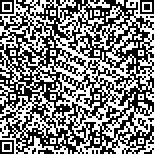|
| 引用本文: | 文世勇,林雨霏,王紫竹,孙田力,李飞,石晓勇,刘永健,赵建华.米氏凯伦藻和东海原甲藻生长的光照强度生态幅研究.海洋与湖沼,2019,50(3):664-671. |
| |
|
| |
|
|
| 本文已被:浏览 1855次 下载 1833次 |

码上扫一扫! |
|
|
| 米氏凯伦藻和东海原甲藻生长的光照强度生态幅研究 |
|
文世勇1,2, 林雨霏3, 王紫竹1,2, 孙田力3, 李飞1,2, 石晓勇3, 刘永健1,2, 赵建华1,2
|
|
1.国家海洋环境监测中心 大连 116023;2.国家海洋局近岸海域生态环境重点实验室 大连 116023;3.自然资源部海洋减灾中心 北京 100194
|
|
| 摘要: |
| 藻类生长的光照生态辐是指在一定光照强度范围内藻类能生长和繁殖的水平范围,由藻类生长的最适光照强度、光照强度适宜生长范围和光照强度耐受限度构成。为了定量获取藻类生长的光照生态幅,在室内培养条件下,分别研究了三个温度(18、22、25℃)条件下六个不同光照强度[28.32、55.15、75.06、96.59、111.66和135.75μmol/(m2·s)]对米氏凯伦藻和东海原甲藻细胞数和最大比生长率的影响,依据Shelford耐受性定律建立了米氏凯伦藻和东海原甲藻的光照耐受性模型,并得到了藻类生长的最适光强、光强适宜生长范围和光强耐受限度的定量表达。结果表明:无论是米氏凯伦藻还是东海原甲藻,在同一温度条件下,在实验设定的光照强度水平范围内,均分别存在一个适宜藻类生长的最适光强Iopt,且当光强I ≤ Iopt时,藻类细胞密度和比生长率均随着光强的升高而显著增大;而当I ≥ Iopt时,藻类细胞密度和比生长率随着光强的升高而显著减小。此外,随着培养温度的升高,藻类细胞密度和比生长率均呈现"先升后降"的变化趋势。建立的藻类生长光照耐受性模型与Shelford耐受定律较为吻合,并定量得到了米氏凯伦藻在18、22、25℃下的最适生长光强分别为81.48、80.15、79.27μmol/(m2·s);光强适宜生长范围分别为33.11-162.96、32.57-160.3、32.03-158.54μmol/(m2·s);东海原甲藻在18、22、25℃下的最适生长光强分别为79.39、78.19、76.69μmol/(m2·s);光强适宜生长范围分别为31.89-158.78、31.77-156.38、31.18-153.38μmol/(m2·s)。 |
| 关键词: 米氏凯伦藻 东海原甲藻 生态幅 最适光强 光照强度适宜生长范围 光照强度耐受限度 |
| DOI:10.11693/hyhz20180800193 |
| 分类号:P735 |
| 基金项目:国家重点研发计划“海洋环境安全保障”重点专项,2017YFC1404304号;国家自然科学基金项目,41371494号;浙江省海洋与海岛管理资金项目;浙江省海洋灾害防灾减灾资金项目 |
| 附件 |
|
| ECOLOGICAL AMPLITUDE FOR LIGHT INTENSITY OF KARENIA MIKIMOTOI AND PROROCENTRUM DONGHAIENSE AT DIFFERENT TEMPERATURES IN LABORATORY CULTURES |
|
WEN Shi-Yong1,2, LIN Yu-Fei3, WANG Zi-Zhu1,2, SUN Tian-Li3, LI Fei1,2, SHI Xiao-Yong3, LIU Yong-Jian1,2, ZHAO Jian-Hua1,2
|
|
1.National Marine Environmental Monitoring Center, Dalian 116023, China;2.Key Laboratory for Ecological Environment in Coastal Areas, State Oceanic Administration, Dalian 116023, China;3.National marine hazard mitigation service, Beijing 100194, China
|
| Abstract: |
| The ecological amplitude for light intensity of algal growth refers to the level of growth and reproduction of algae within a certain light intensity range, which usually consists of the optimum, suitable, and tolerance light intensity ranges for algal growth. To obtain the ecological amplitude for light intensity of Karenia mikimotoi and Prorocentrum donghaiense, laboratory culture experiments comprising six levels of light intensity gradients[28.32, 55.15, 75.06, 96.59, 111.66, and 135.75μmol/(m2·s)] were carried out. The effects of these six levels on algal cell densities and specific growth rate of K. mikimotoi and P. donghaiense at three temperature gradients (18, 22, and 25℃) were determined. Moreover, a tolerance model between light intensity and specific growth rate of algae was established based on the experimental results and Shelford's law of tolerance. Finally, the optimum, suitable, and tolerance light intensity ranges for algal growth were obtained through the tolerance model. Results showed (1) an optimum light intensity for algal growth (Iopt) in the given light intensity gradient level under the same temperature conditions, regardless of K. mikimotoi or P. donghaiense. When I ≤ Iopt, the algal cell densities and specific growth rate of K. mikimotoi and P. donghaiense increased significantly as light intensity increased (ANOVA, P<0.05); when I ≥ Iopt, the algal cell densities and specific growth rate decreased significantly as light intensity increased (ANOVA, P<0.01). (2) With the increase in temperature, algal cell densities and the specific growth rate of K. mikimotoi and P. donghaiense initially increased and decreased thereafter. (3) The light intensity tolerance model was consistent with Shelford's law of tolerance. (4) For K. mikimotoi cultures grown at the three temperatures (18, 22, and 25℃), the optimum light intensity values were 81.48, 80.15, and 79.27μmol/(m2·s), respectively, and the suitable light intensity ranges were 33.11-162.96, 32.57-160.3, and 32.03-158.54μmol/(m2·s), respectively. (5) For P. donghaiense cultures grown at the three temperatures (18, 22, and 25℃), the optimum light intensity values were 79.39, 78.19 and 76.69μmol/(m2·s), respectively, and the suitable light intensity ranges were 31.89-158.78, 31.77-156.38 and 31.18-153.38μmol/(m2·s), respectively. |
| Key words: Karenia mikimotoi Prorocentrum donghaiense ecological amplitude the optimum light intensity for algal growth suitable light intensity ranges for algal growth tolerance light intensity ranges for algal growth |
|
|
|
|
|
